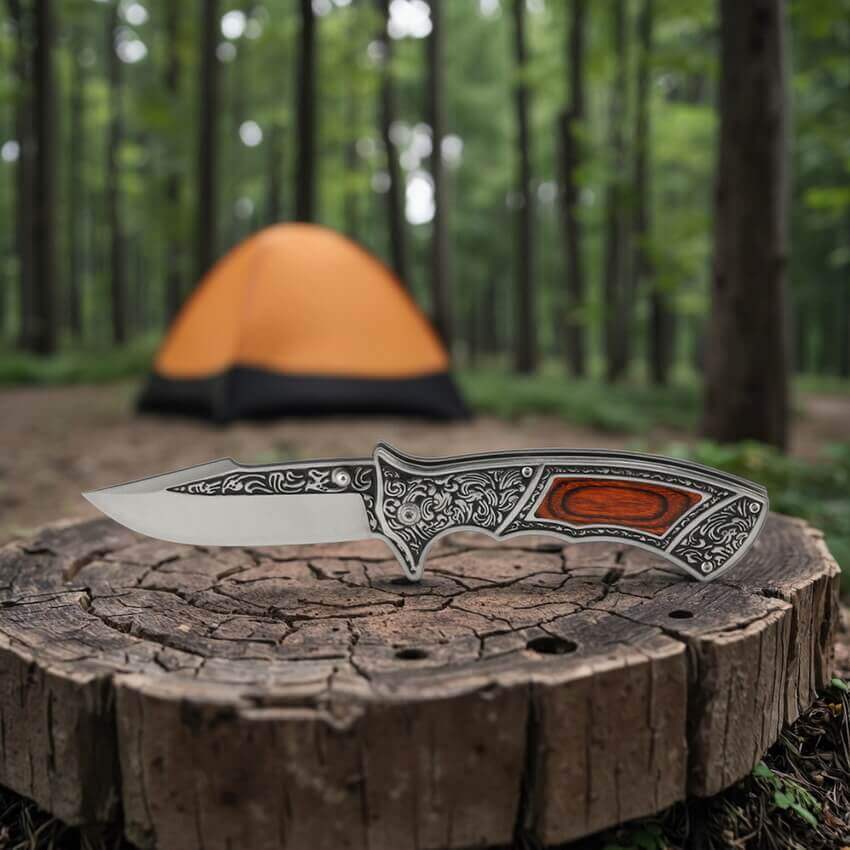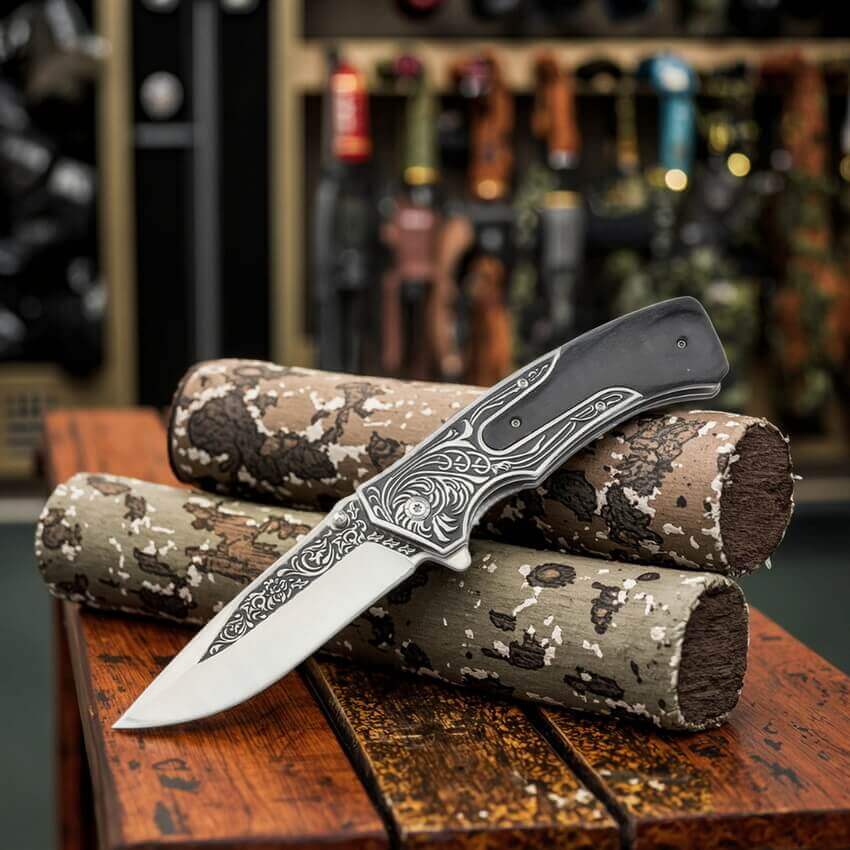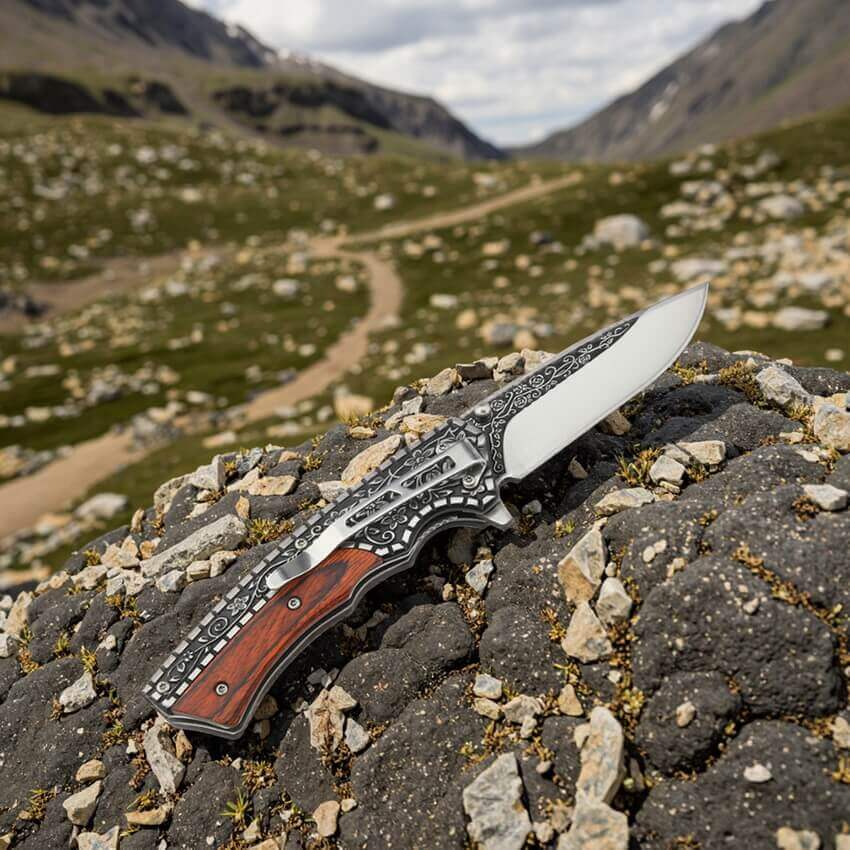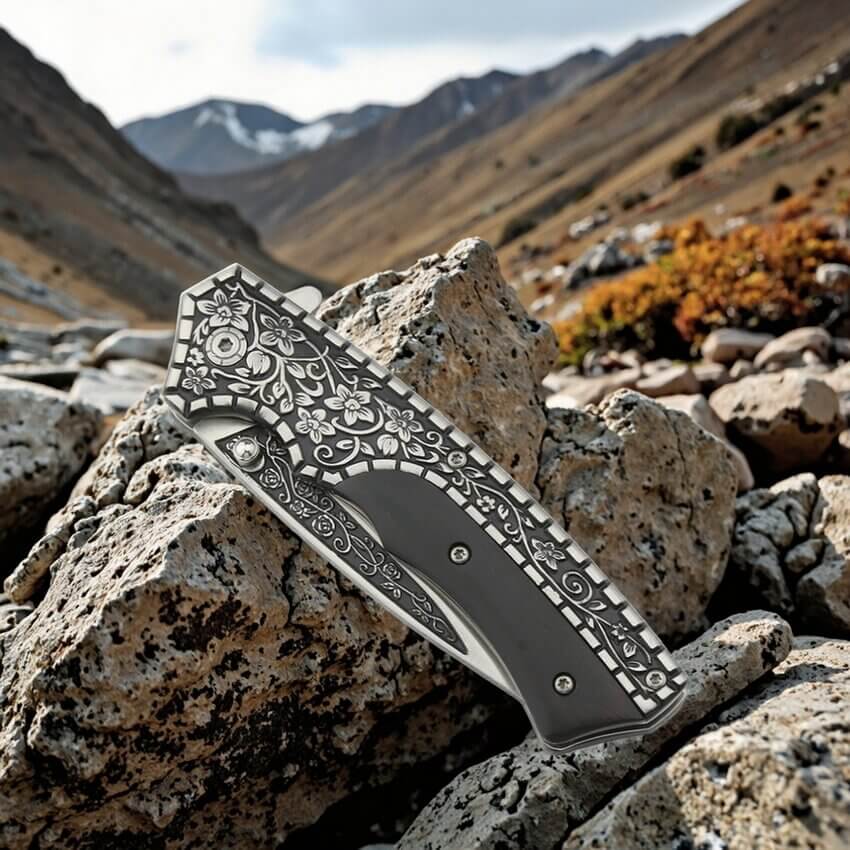![]() Windy
Windy
 WeChat
WeChat
 WhatsApp
WhatsApp
Click:217 seen
In the field of tool manufacturing, outdoor knives are renowned for their practicality and durability. However, in recent years, a unique technique - the outdoor knife engraving technique, has gradually emerged, adding new charm and value to outdoor knives.
The outdoor knife carving art has a long history. It originated from the ancient craftsmen's pursuit of decorating their knives. In the early days, the carvings were mainly simple geometric patterns, used to distinguish the purpose or owner of the knife. Over time, the carving technique became more refined, incorporating more cultural elements. In some regions, artisans would carve totems symbolizing courage and strength on the knives, not only beautifying the knives but also carrying the local cultural beliefs.

Nowadays, the outdoor knife carving art is constantly innovating in the process of inheritance. Modern artisans use advanced tools and technologies to make the carvings more detailed and complex. The introduction of laser engraving technology enables precision down to the micrometer level, allowing for the creation of realistic patterns such as fine veins and delicate animal hair. At the same time, traditional hand-carving remains highly favored, as its unique texture and warmth cannot be replicated by machines. Handcraftsmen, relying on their experience and touch, meticulously carve on the blade, handle, and sheath, endowing each knife with unique artistic value.
This technique also offers greater diversity in material selection. Besides traditional metals, natural materials such as wood, ivory, and antler are also used. In the carving of the handle, artisans choose wood with beautiful textures, using the natural texture of the wood to complement the carvings, creating a unique artistic effect. And in the production of the scabbard, the leather carvings showcase the beauty of the combination of softness and toughness.

The outdoor knife carving art is not only an artistic creation, but also promotes the development of related industries. At the same time, the development of the carving technique also prompts knife designers to collaborate with artists to create more outdoor knives that combine both practicality and artistic value, meeting the needs of different consumers.
In the future, as people's pursuit of personalized and high-quality products continues, the outdoor knife engraving and decoration technique is expected to have a broader development space. Technically, an artificial intelligence design system may deeply intervene, analyzing massive cultural symbols and user preference data to quickly generate engraving schemes that conform to market trends, providing artisans with more creative inspiration while ensuring the uniqueness and innovation of the design. In the material field, environmentally friendly composite materials may become the new favorite. These materials not only have excellent physical properties but also can be perfectly combined with the engraving technique, meeting the requirements of modern society for green and environmentally friendly products, such as degradable plant-based composite materials. After special treatment, they can present unique textures that complement the engraving patterns.

In terms of market expansion, the further development of cross-border e-commerce will open up the global market for outdoor knife engraved artworks. Cultural elements from different countries and regions will be more deeply integrated into the engraving designs, leading to cross-cultural artistic collisions. For instance, combining the Eastern dragon and phoenix motifs with the Western knight emblems to create products with international appeal. At the same time, customized services will become more widespread. Consumers can participate in the entire process of outdoor knife engraving design according to their own needs and preferences, making each product a unique work of art.
There will also be breakthroughs in the fields of cultural inheritance and education. More universities may offer specialized courses related to outdoor knife carving and embroidery techniques, training professional designers and craftsmen. At the same time, the protection projects for intangible cultural heritage will further promote the inheritance and development of this traditional craft. Through the establishment of craft museums, holding exhibitions of intangible cultural heritage, and other activities, more people will understand and recognize the historical and cultural value of outdoor knife carving and embroidery techniques, stimulating public awareness of protecting and inheriting traditional crafts.

It can be foreseen that the outdoor knife carving art will, under the multiple impetus of technological innovation, market expansion and cultural inheritance, continuously regain its new vitality and vigor. It will become a brilliant gem in the knife manufacturing industry, bringing more exquisite products with both practical value and artistic charm to the world.
